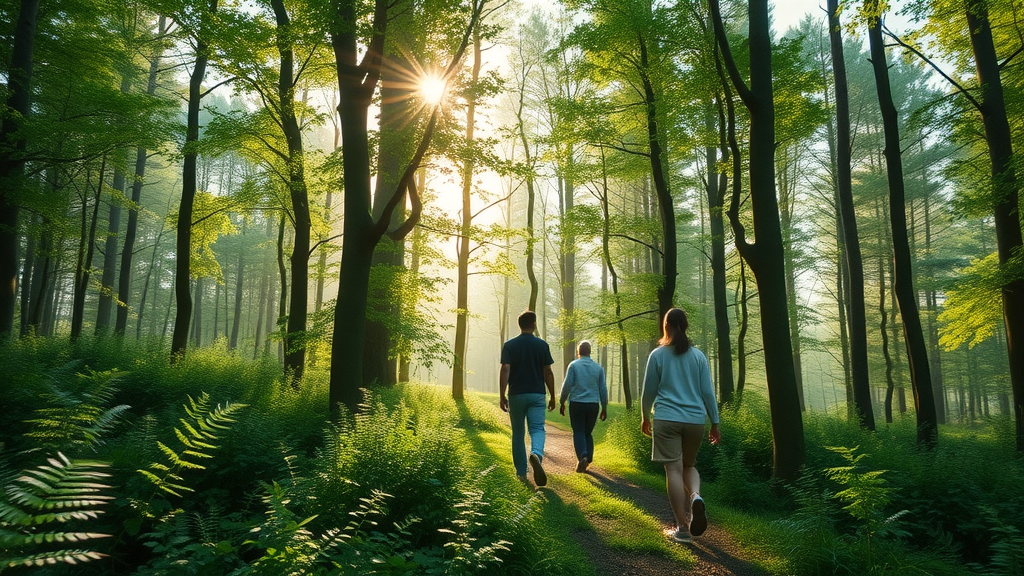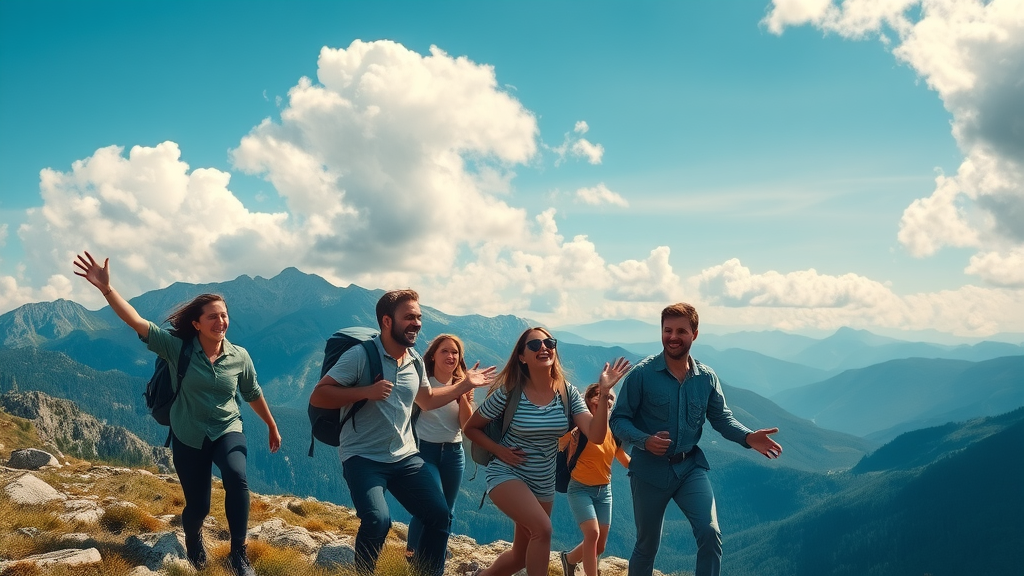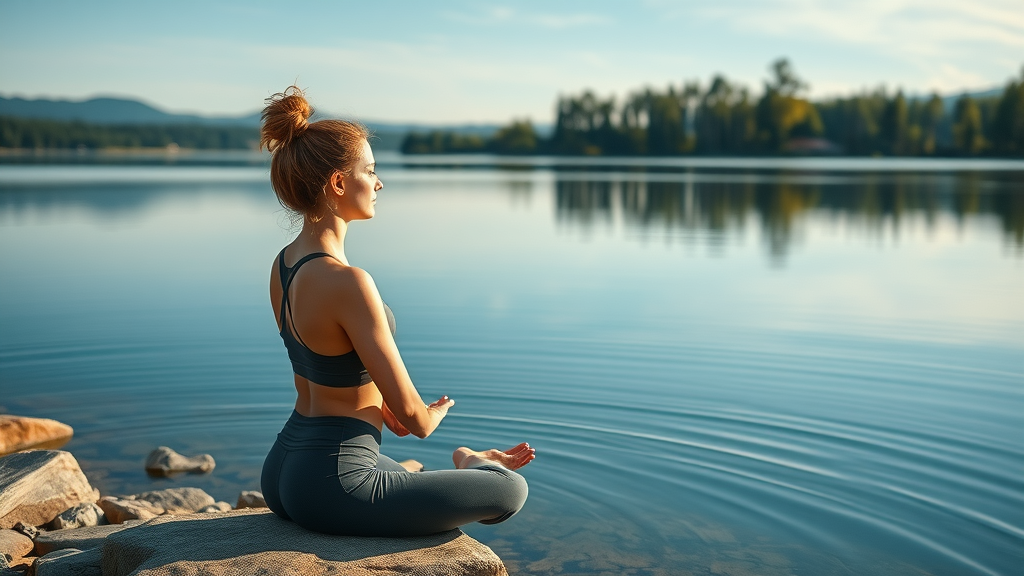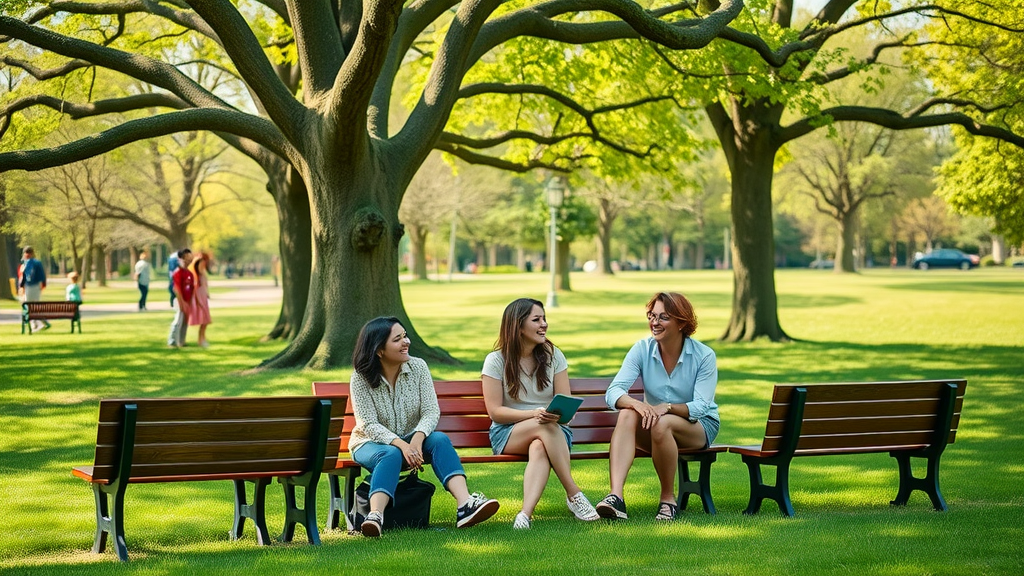Did you know that over 90% of people report immediate improvements in mood and reduced stress just after one session of ecotherapy? This startling statistic is proof that ecotherapy methods offer rapid benefits for mind and body—no prescription needed, only a step outdoors. If you are seeking a holistic, natural approach to wellness that is backed by science, exploring ecotherapy methods may transform your mental and physical health more quickly than you ever imagined.
Unlocking Mental and Physical Health with Ecotherapy Methods
- According to recent studies, over 90% of people report immediate improvements in mood and reduced stress levels after engaging in ecotherapy methods. This article explores the science and application of nature therapy for holistic well-being.

Ecotherapy methods are rapidly gaining recognition as a natural, effective way to improve both mental health and physical health . These methods utilize the restorative power of the natural world —forests, parks, gardens, and green spaces—to promote holistic well-being. From forest bathing and green exercise to therapy sessions led by professionals, the spectrum of ecotherapy is wide, adaptable, and accessible to anyone. Whether you're spending time gardening, walking mindfully in a park, or engaging in animal-assisted therapy, the core principle remains the same: connect with nature, and reap the genuine, measurable health benefits .
People of all ages, backgrounds, and fitness levels can benefit from ecotherapy. Unlike traditional therapies or medications, ecotherapy methods carry few risks and often produce swift, visible improvements. For example, a simple walk in a natural setting has been shown to reduce symptoms of anxiety, depression, and even physical pain. More immersive programs, like wilderness therapy or horticultural therapy , provide structured opportunities for healing that can be life-changing. As research grows, so does the acknowledgment of nature therapy as a powerful, evidence-based approach to well-being.
What You Need to Know: Key Benefits and Insights Into Ecotherapy Methods
- Understand the foundational principles of ecotherapy methods and their essential role in nature therapy.
- Explore the most effective ecotherapy methods for immediate mental and physical health benefits.
- Discover how nature therapy, green exercise, forest bathing, and other therapy programs are transforming wellness.
At its core, nature therapy involves activities that strengthen our connection to nature . Research demonstrates that spending intentional time in the natural environment can lower cortisol (the stress hormone), improve cardiovascular function, and boost mood. Importantly, these changes can happen almost instantly; people often feel calmer, happier, and more resilient after just 20 minutes outdoors. Ecotherapy methods also support sustainable lifestyle changes, providing long-term improvements for those managing mental illness, chronic stress, or simply seeking better overall health.
The beauty of ecotherapy lies in its versatility. Green exercise (physical exertion in green spaces), forest bathing (sensory immersion in woodlands), animal-assisted therapy, and horticultural therapy each harness different aspects of the natural world to help us thrive. Whether integrated into a professional therapy program or practiced independently, these approaches amplify the benefits of nature that traditional therapy settings can't easily replicate.
A Science-Backed Introduction to Ecotherapy Methods and Nature Therapy
Defining Ecotherapy Methods: What Is Nature Therapy?

Ecotherapy methods , sometimes called nature therapy , involve a variety of structured or unstructured activities that foster healing through engagement with the natural world . This can range from solitary experiences like journaling in a garden or practicing mindfulness under the trees, to group-based therapy sessions outdoors. The goal of nature therapy is to encourage psychological and physical well-being by utilizing the calming, inspiring, and restorative qualities of green settings.
Key elements of nature therapy include intentionality, immersion, and mindful awareness of the natural environment. Ecotherapy methods provide a practical counter to modern stressors by replacing artificial environments and constant digital noise with the rhythms of the outdoors. Simply put, ecotherapy methods are not just about spending time outside—they're about purposefully using green spaces and nature-based activities to support holistic health and treat symptoms of mental illness, anxiety, and physical ailments.
Research shows that practicing nature therapy —even as simple as a mindful walk through a park—can result in major improvements to both psychological and physical outcomes. By making ecotherapy a regular part of your wellness routine, you can experience positive changes in mental health , improved sleep, sharper focus, and an increased sense of overall vitality.
The Historical Evolution and Evidence of Ecotherapy Programs
For centuries, humans have intuitively understood the healing power of nature. Ancient Greek physicians prescribed countryside walks; traditional Eastern medicine places the natural world at the heart of well-being. However, the formalization of ecotherapy programs is a more recent phenomenon, fueled by rising urbanization and the prevalence of mental illness. Over the last few decades, clinical studies have validated what our ancestors seemed to know: nature is a potent healer that can be systematically integrated into therapy programs .
Modern ecotherapy programs take many forms—from guided forest bathing sessions to adventure therapy interventions for youth at risk. The evidence base for these programs is robust. Meta-analyses and systematic reviews consistently find that time in nature mitigates symptoms of depression, anxiety, and mood disorders while also reducing blood pressure and enhancing immune function. Many mental health professionals now blend ecotherapy into treatment plans, confirming its value as a based therapy beyond traditional clinical practices.
The growing popularity of nature therapy and related approaches highlights their flexibility and accessibility. Anyone—regardless of age, ability, or background—can personalize their ecotherapy program to suit their unique needs, making it a truly inclusive pathway to health.
Science Behind Ecotherapy Methods: Mental Health Benefits and Physical Health
Scientific interest in ecotherapy methods is at an all-time high. Recent research demonstrates that interactions with nature stimulate the autonomic nervous system, lower stress hormones, and improve the body's regulation of inflammation. Regular nature therapy sessions have been shown to reduce symptoms in those with anxiety, depression, and even chronic pain conditions. These mental health benefits are often as significant as, or greater than, those offered by pharmacological treatments—without the risk of side effects.
But it's not just the mind that benefits; physical health also thrives when we reconnect with the natural environment . Outdoor activities increase vitamin D levels, enhance cardiovascular health, and promote physical activity, regardless of fitness level. In addition, the social aspects of many ecotherapy programs—like group gardening or hiking—can increase motivation and accountability for maintaining healthy behaviors.
"The greatest healing therapy is friendship and love—especially when intertwined with the natural world." – Renowned Ecotherapist
Core Ecotherapy Methods for Transformation
Forest Bathing: Immersing in the Healing Power of Nature

Originating in Japan as shinrin-yoku , forest bathing is the art of slow, intentional immersion in a forest or wooded area. Unlike hiking or exercise, the emphasis here is on mindful engagement—walking slowly, noticing sights and sounds, breathing deeply, and staying present. Regular forest bathing sessions are linked to reductions in anxiety and depression, bolstered immune response, and lower blood pressure. Nature therapy approaches like forest bathing are especially effective because they leverage all five senses to help participants ground themselves in the present moment.
What sets forest bathing apart as one of the top ecotherapy methods is its accessibility. No special equipment or fitness prerequisite is needed. Both guided sessions and solo practices are available, and participants frequently report a deepened sense of calm and well-being after even one visit. If you’re new to nature therapy or seeking a simple way to gain the mental health benefits of outdoor activity, forest bathing is an ideal entry point.
Importantly, research on forest bathing supports its use not only for mood enhancement, but also for strengthening immune function and reducing markers of chronic inflammation—a critical factor in long-term physical health .
Green Exercise: Physical Health Enhancement Through Ecotherapy Methods
Green exercise refers to any form of physical activity that takes place in green spaces —from running through a park to practicing yoga beside a lake. Numerous studies show that green exercise yields more pronounced improvements in mental health and physical health than indoor workouts alone. This is due to the combined effects of exercise-induced endorphin release and the unique restorative impact of the natural world .
Example activities for green exercise include brisk walking, cycling, tai chi in the park, and organized sports on natural grass fields. People who consistently participate in green exercise report enhanced mood, decreased symptoms of stress or depression, and significantly higher levels of motivation to continue with their routines. This makes green exercise a foundational element of many ecotherapy programs .
Healthcare providers increasingly recommend green exercise as a based therapy for chronic health conditions and stress-related illnesses. The science supports that outdoor physical activity in a natural environment amplifies the positive effects seen from standard workouts, making it a vital strategy for anyone seeking to improve both physical health and mental health .
Adventure Therapy and Wilderness Therapy: Empowerment from the Outdoors

Adventure therapy and wilderness therapy are structured ecotherapy methods that harness outdoor adventure and challenge as vehicles for personal growth. These programs often combine hiking, rock climbing, camping, and problem-solving in remote natural settings, with professional therapeutic guidance woven throughout. While originally designed for youth or individuals facing significant behavioral challenges, these experiences have broadened in scope and can now benefit anyone seeking transformation through nature.
Participants in wilderness therapy often cite increased self-confidence, resilience, social skills, and a greater sense of purpose. The unpredictable, demanding aspects of outdoor adventure prompt individuals to confront fears, develop coping mechanisms, and form genuine, enduring relationships with both peers and instructors.
From addiction recovery to trauma healing, adventure therapy programs are increasingly integrated into mainstream mental health and physical health treatment strategies. The natural setting acts as both a catalyst and a supportive partner in the journey.
Horticultural Therapy and Conservation-Based Approaches
Horticultural therapy is a longstanding ecotherapy method that involves gardening and plant-based activities for physical and mental health improvement. Participants may cultivate vegetables, tend flowers, or participate in conservation efforts, all under the guidance of an expert. This method appeals widely because it combines low-impact activity with the psychological benefits of nurturing living things—a powerful boost for those dealing with depression, anxiety, or social isolation.
Besides its therapeutic benefits, horticultural therapy builds new practical skills and supports environmental stewardship. Conservation-based approaches, such as volunteering for local cleanups or habitat restoration, invite participants to contribute positively to the natural world , deepening their connection to nature and improving community bonds.
These nature therapy practices can be adapted for all ages and physical abilities, making them highly inclusive aspects of a personalized ecotherapy program .
Animal-Assisted Therapy: Connecting with the Natural World

Animal-assisted therapy brings trained animals—most commonly dogs, horses, or small mammals—into structured therapeutic activities, often set in natural or garden environments. The non-judgmental, present-focused nature of animals facilitates emotional breakthroughs, reduces symptoms of conditions like PTSD or anxiety, and encourages communication for children and adults alike.
Animal-assisted therapy is often combined with traditional ecotherapy methods , allowing participants to deepen their connection to the natural world while receiving the proven mental health benefits provided by animal companionship. The physical act of petting or walking with a therapy animal releases oxytocin, reduces heart rate, and can even support recovery from trauma or chronic illness.
Many therapy programs now integrate animals as a way to further boost engagement, motivation, and lasting positive outcomes, making this one of the most popular and versatile avenues within the ecotherapy spectrum.
| Ecotherapy Method | Mental Health Benefits | Physical Health Benefits | Typical Activities |
|---|---|---|---|
| Forest Bathing | Stress reduction, improved mood, enhanced mindfulness | Lower blood pressure, boosted immunity | Mindful walking, sensory immersion |
| Green Exercise | Reduced depression, elevated mood, increased engagement | Cardiovascular improvement, muscular strength | Running, yoga, outdoor sports |
| Adventure/Wilderness Therapy | Personal growth, resilience, reduced anxiety | Enhanced stamina, endurance, physical challenge | Hiking, climbing, team challenges |
| Horticultural Therapy | Emotional regulation, reduced loneliness | Fine motor skills, physical activity | Gardening, plant care, conservation work |
| Animal-Assisted Therapy | Reduced stress, increased socialization, trauma recovery | Lower blood pressure, physical engagement | Animal care, walking, grooming |
How Ecotherapy Methods Support Mental Health
Reducing Anxiety and Stress with Nature Therapy

Persistent anxiety and chronic stress are common challenges in modern life, but nature therapy provides an immediate, accessible solution. Just 20-30 minutes of exposure to green space or natural environments—engaging in mindful walking, light exercise, or simply sitting by a lake—can quickly lower physiological stress markers such as heart rate and blood pressure. This makes ecotherapy methods a powerful adjunct therapy for both children and adults dealing with anxiety and mood disorders.
The multisensory engagement offered by the natural world further enhances the effects. Listening to bird calls, smelling flowers, feeling the sun, and breathing fresh air activate the nervous system's calming response. These tangible experiences create an oasis from anxiety that medication and indoor therapy sessions often cannot match.
Over time, sustained practice of nature therapy helps individuals build coping skills, emotional resilience, and a toolkit for stress management that lasts far beyond the immediate effects of a single session.
Uplifting Mood: The Mental Health Benefits of Ecotherapy Methods
The mental health benefits of ecotherapy are both immediate and long-lasting. Repeated engagement with ecotherapy methods has demonstrated positive effects on symptoms of depression, low mood, and even serious mental illness. Numerous studies highlight that people who spend regular time in green spaces report greater happiness, reduced feelings of loneliness, and improved self-esteem.
The act of immersing oneself in the natural world disrupts negative thought patterns, invites relaxation, and activates reward pathways in the brain. Programs such as green therapy or nature journaling encourage reflection and mindfulness, enabling participants to process complex emotions with the supportive backdrop of the outdoors.
As mental health challenges become more prevalent in society, the role of ecotherapy methods in prevention and intervention continues to grow, with increasing numbers of clinicians offering nature therapy as part of comprehensive treatment plans.
Social Connection and Community Through Therapy Programs

One of the often-overlooked benefits of ecotherapy programs is their ability to foster social connection and community. Group nature walks, volunteering in conservation projects, and participating in horticultural therapy or adventure therapy activities naturally bring people together around shared goals and interests. This sense of belonging is vital for mental health, as isolation and loneliness are significant risk factors for depression and anxiety.
Being part of a community-focused therapy program or ecotherapy group helps individuals feel supported, validated, and empowered. Even informal gatherings, such as community gardening or local hiking clubs, can spark new friendships and deepen one’s connection to the natural world .
Strengthening social ties in a natural setting not only complements the psychological benefits of ecotherapy but also increases the likelihood of long-term engagement and sustained personal growth.
Physical Health Benefits Driven by Ecotherapy Methods
Boosting Cardiovascular Health with Green Exercise
Cardiovascular health is a fundamental pillar of overall well-being, and green exercise —such as jogging, brisk walking, or cycling in parks—proves especially effective. Research shows that physical activity in a natural setting leads to greater reductions in cholesterol, blood pressure, and heart disease risk factors compared to similar activity indoors. The visual and auditory stimuli of a green space encourage longer, more consistent workouts, naturally improving physical health .
Additionally, those who participate in outdoor exercise generally maintain higher motivation levels due to the inherent variety and beauty of the natural environment . This advantage means individuals are more likely to stick with their routines, making it easier to achieve and sustain heart health improvements over time.
Green exercise is especially effective for individuals who find gym settings intimidating or who prefer low-cost, accessible forms of physical health enhancement. Parks, trails, and urban greenways are increasingly designed to accommodate all ages and abilities, reinforcing the inclusive philosophy behind many ecotherapy methods .
Strengthening Immune Function Through Outdoor Therapy Programs

Engaging in outdoor ecotherapy sessions not only supports cardiovascular wellness but also has a profound impact on immune system function. Exposure to a biodiversity-rich natural environment introduces the body to beneficial microbes, which can help balance immune response, decrease inflammation, and reduce autoimmune symptoms. This effect is so well-documented that some healthcare providers now recommend based therapy in immune system rehabilitation programs.
Activities like wilderness therapy , forest bathing, or even simple nature walks increase exposure to phytoncides—defensive compounds released by trees and plants. Phytoncides have demonstrated efficacy in bolstering the body’s natural killer cell activity, which plays a crucial role in disease prevention and overall physical health .
Regular participation in outdoor therapy programs thus strengthens the body's natural defenses, making ecotherapy an appealing complement (or alternative) to pharmaceutical interventions for immune support.
Restoring Energy and Focus Using Nature Therapy
Modern lifestyles often leave us feeling fatigued and unfocused. Nature therapy offers a fast and effective remedy by restoring mental clarity, increasing concentration, and replenishing energy levels. Brief periods spent in green spaces—parks, gardens, or even natural light through a window—are proven to reinvigorate cognitive performance, providing a crucial boost for children, students, and professionals alike.
The restorative benefits are visible after even short sessions—such as a lunchtime walk in an urban green space or a weekend spent in a forest. The key is consistency: making nature therapy a regular part of your week can help sustain these energy and focus improvements over the long term.
Through structured ecotherapy methods and self-guided practices, individuals can create routines that maximize productivity and well-being, unlocking reserves of natural energy and motivation that traditional settings may struggle to deliver.
Developing a Personalized Ecotherapy Program
Choosing the Right Ecotherapy Methods for Your Needs
With so many ecotherapy methods available, choosing the right fit requires an honest assessment of your goals, preferences, and health profile. Some may prefer solitary, meditative experiences (such as forest bathing or nature journaling), while others thrive in social, community-oriented activities like gardening groups or adventure therapy programs. Consider your physical and mental health needs, the amount of time you can dedicate, and any logistical or accessibility requirements.
A helpful starting point is to sample several options—attend a guided forest walk, try a green exercise class, or join a conservation volunteering day. Observing how your mind and body respond will help you narrow down the most effective ecotherapy program for your unique situation.
Remember: the most beneficial routine is the one you'll enjoy and maintain consistently. The flexibility of nature therapy means you can combine several approaches for maximum benefit.
Integrating Ecotherapy Methods Into Everyday Life
You don’t need to overhaul your entire lifestyle to integrate ecotherapy methods . Small, consistent changes—like spending lunch breaks in a park, tending to a balcony garden, or walking your dog in the evening—can quickly add up. If time or mobility is limited, even indoor plants or nature sounds can deliver measurable improvements in mood and focus.
For families, incorporating weekly nature outings or group gardening sessions can reinforce connections and healthy habits for all members. Educators may embed nature therapy principles in classrooms through outdoor learning and green space play. Most importantly, prioritize regular, intentional time in nature as a part of your ongoing self-care practice.
Consistency outshines intensity when it comes to ecotherapy. The more you make nature a routine element of your mental and physical wellness, the more profound and lasting the benefits you’ll experience.
Working with Professionals: Finding Qualified Nature Therapy Practitioners
While many ecotherapy methods can be self-directed, there are times when professional support is valuable—especially for individuals with complex mental illness , trauma histories, or special needs. Look for certified ecotherapists, occupational therapists, or mental health counselors who have formal training in nature therapy and evidence-based, outdoor therapy programs.
These professionals can help design personalized ecotherapy programs , facilitate group sessions, and ensure practices are safe, effective, and tailored to your health requirements. They can also monitor progress, adapt your routine, and integrate ecotherapy with other forms of treatment for a more holistic approach.
If you’re interested in working with a professional, check for local organizations, hospital programs, or national associations specializing in nature therapy and ecotherapy methods .
People Also Ask: Exploring Common Questions About Ecotherapy Methods
What are the different types of ecotherapy methods?
- Ecotherapy methods encompass forest bathing, green exercise, animal-assisted therapy, horticultural therapy, adventure therapy, and wilderness therapy—each offering unique pathways to healing through engagement with the natural world.
What are the exercises for ecotherapy methods?
- Common ecotherapy exercises include mindful walking in parks, gardening, guided forest bathing sessions, wildlife observation, nature art projects, and conservation volunteering.
What are the practices of eco therapy methods?
- Core ecotherapy practices involve outdoor mindfulness, nature journaling, green workouts, group therapy in nature, and utilizing the natural world to facilitate emotional or psychological growth.
What are the four types of therapies included in ecotherapy methods?
- The four main types are wilderness therapy, horticultural therapy, animal-assisted therapy, and adventure therapy.
Expert Quotes and Latest Research on the Impact of Ecotherapy Methods
"Contact with the natural world is now recognized as vital for mental health and physical well-being — clinical studies on ecotherapy methods confirm measurable reductions in depression and anxiety." — Dr. Anna Walker, Clinical Psychologist
Evidence-Based Benefits of Ecotherapy Methods
Short- and Long-Term Health Benefits Revealed
Researchers have documented both immediate and lasting improvements from ecotherapy methods. Short-term benefits include quick reductions in stress, anxiety, and acute physical pain—even after just one session. Long-term participation is associated with increased resilience, greater life satisfaction, reduced risk for chronic disease, and improved recovery from mental illness or trauma. Notably, the benefits of nature are cumulative, with ongoing participation amplifying and sustaining positive mental and physical health outcomes.
Nature therapy is now endorsed as a supplementary or even primary intervention in many wellness programs and healthcare environments, confirming its vital role in holistic, patient-centered care.
Participants who join structured ecotherapy programs often maintain lower rates of relapse (for mental illness and substance use), and report significantly higher levels of happiness and social connectedness compared to their peers.
How Based Approach Enhances the Effectiveness of Nature Therapy
The effectiveness of ecotherapy methods increases dramatically when guided by evidence-based approaches. Professional practitioners can administer standardized assessments, track outcomes, and adjust therapy programs based on individual progress—just as they would within a clinical setting. This based approach ensures safety, maximizes benefit, and provides accountability for achieving desired health changes.
Participants gain more confidence in their wellness journey, experience fewer barriers to access, and can integrate nature therapy practices with other medical or psychological interventions for a more comprehensive recovery or health management plan.
Organizations and community leaders adopting based ecotherapy programs are witnessing lower healthcare utilization, improved workplace productivity, and stronger community health metrics.
| Method | Mental Health Benefits | Physical Health Gains |
|---|---|---|
| Forest Bathing | Stress relief, happiness | Lower blood pressure, immune boost |
| Green Exercise | Depression management, energy | Cardiac fitness, weight control |
| Adventure/Wilderness Therapy | Personal empowerment, social skills | Stamina, flexibility, overall health |
| Horticultural Therapy | Emotional stability, cognitive engagement | Motor skills, mild aerobic activity |
| Animal-Assisted Therapy | Emotional support, trauma recovery | Physical relaxation, lower risk factors |
- List of Notable Mental Health and Physical Health Improvements Documented by Researchers
Step-by-Step Guide to Starting a Safe Ecotherapy Program
Assessing Your Personal Needs and Therapy Goals
Begin your ecotherapy journey by identifying your unique needs and goals. Are you seeking stress reduction, physical fitness, social connection, or recovery from a specific condition? Be honest about your comfort level outdoors, available time, and support needs. Write down what you hope to achieve with nature therapy —whether that’s improved sleep, lower anxiety, better relationships, or simple enjoyment of the natural world .
Talk to a healthcare or mental health professional if you have existing conditions. They can guide you in selecting safe, appropriate ecotherapy methods and ensure your plan aligns with broader treatment objectives.
Consider using a journal or app to track your starting point—record mood, energy levels, and any symptoms you experience before implementing ecotherapy methods . This baseline will help measure progress later.
Designing a Nature Therapy Routine at Home or Outdoors
Next, outline a routine that fits your lifestyle. This could mean setting aside 20 minutes every morning for a park walk, joining a local gardening club, or scheduling monthly forest bathing sessions. Make your plan realistic and specific; consider barriers like weather, accessibility, or safety, and have backup indoor nature options (like houseplants or guided meditations) for challenging days.
Mix and match ecotherapy methods for variety—alternate between green exercise, mindful journaling, and group nature activities. Setting reminders and enlisting a friend or family member increases accountability and fun.
Check with local community centers, parks departments, or online directories for free or low-cost nature therapy programs. Many organizations now feature virtual nature therapy experiences for remote or housebound participants.
Measuring Progress and Outcomes from Ecotherapy Methods
Track your progress using your original goals and baseline metrics. After several weeks of practicing ecotherapy methods , note changes in mood, stress, sleep patterns, social engagement, or energy levels. Use a simple rating scale, wellness app, or weekly journal entry.
Regularly review and adjust your routine based on your results. If symptoms remain or worsen, consider consulting a professional nature therapist or healthcare provider for individualized guidance. Share your journey with others—community and support increase motivation and deepen the benefits of ecotherapy .
Recognize successes, no matter how small: more energy, better sleep, improved concentration, or simple happiness in nature are powerful indicators of progress.
FAQs on Ecotherapy Methods and Programs
-
How can I find local ecotherapy programs?
Local ecotherapy programs are commonly offered by parks and recreation departments, community gardens, wellness centers, and therapy clinics specializing in nature-based approaches. Search online directories, contact environmental organizations, or ask your healthcare provider for recommendations specific to your region. -
Are ecotherapy methods safe for everyone?
Most ecotherapy methods are safe for a broad range of people and adaptable to different needs. However, consult a healthcare professional if you have significant mobility, mental health, or medical concerns before starting a new program. -
What is the scientific basis for ecotherapy methods?
Decades of research confirm that intentional time in nature regulates stress hormones, enhances mood, lowers blood pressure, and strengthens immunity. Scientific studies from psychology, neuroscience, and public health back the effectiveness of ecotherapy for both mental and physical health gains. -
How often should I practice ecotherapy for optimal benefits?
Incorporating ecotherapy 2–3 times per week is ideal for most people, but even shorter or less frequent sessions can deliver notable benefits. Consistency is the key for sustained results.
Key Takeaways: Why Ecotherapy Methods Are Essential for Mind and Body
- Ecotherapy methods deliver rapid, research-supported benefits for physical and mental health.
- Guided and self-directed engagement with the natural world enhances overall well-being.
- Nature therapy and related programs can be integrated into modern therapeutic practices to create holistic healing approaches.
Start Transforming Your Life: Embrace Ecotherapy Methods Today
Take a step into the natural world and begin your journey with ecotherapy today. Whether alone or guided, the path to a healthier mind and body may be as close as your nearest green space.
 Add Row
Add Row  Add
Add 




Write A Comment